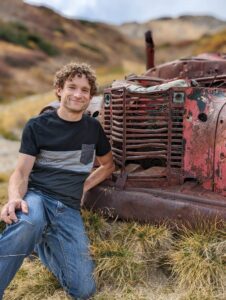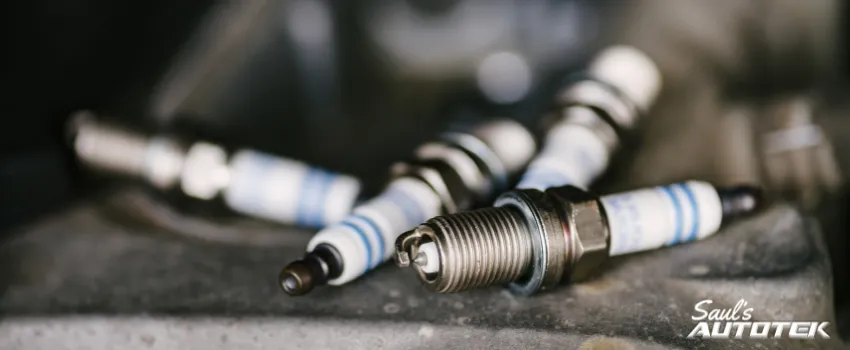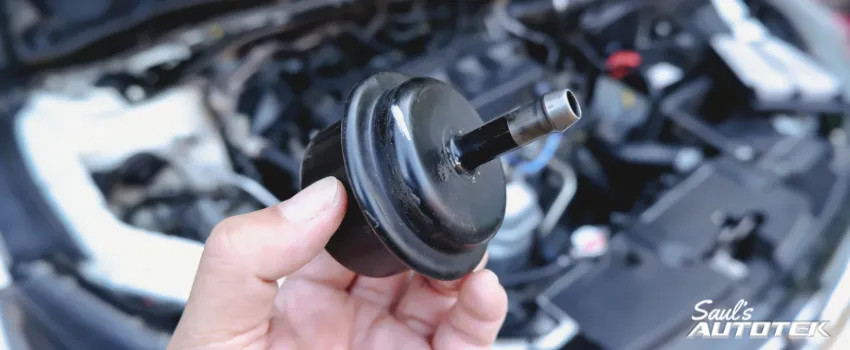Hi there folks. My name’s Saul Reisman. I’m the owner of Saul’s Autotek here in Greenwood Village, Colorado
and today I’m here to talk to you about collision damage that happens in the snow, the type that you can’t see. Now, we’ve all been in a crash before. We’ve all had somebody either slide into us, tap into us in the snowstorm and maybe cause a little bit of body damage, have a fender bender and typically, that’s cosmetic or if it is something stronger, it’s pretty easy to see. We know that there’s been damage and it goes to the body shop for a proper repair. However, the kind of damage you don’t normally see is the one that happens from the ice, just like an iceberg and you’re only seeing that top 10% of it out of the water.
When a vehicle slides and hits a curb in the ice or snow serious damage can occur. Your vehicle is designed to approach any oncoming object directly facing the tire surface. However, typically when we’re in a nicer snowstorm and we’re sliding into a curve, if we’re making, let’s say a left-hand turn and we slide to the outside of the turn because we don’t have enough available traction, the coefficient of friction is no longer sustaining us as we go around that corner. The front tires may understeer and push to the outside of the curve. We call that a scrub radius. If that happens, the outer tires will push to the outside. You’ll feel as if you’re turning the wheel, but the vehicle is still continuing straight, and it may come into contact with that curb on the other side of the road. If this happens, you definitely want to turn the wheels straight, which is very counterintuitive and hit that curb straight on.
Now, it won’t feel very nice. It’s going to be hitting like a big speed bump, not going to be very pleasant, but the vehicle is designed for incoming impacts on the front of the tire, that leading edge. It is not designed for impacts to the side. If we take a look from the front of the vehicle looking towards the rear, we’ll be able to see exactly why damage can occur when this happens and how best to avoid it. If this tire is rotating forward and it strikes an object, that objects going to attempt to deflect into the tire. Now the tires pressurized for the tire itself will absorb some of that force. The tire itself may deform and if it’s at high enough speed, the impact, of say, a cement curb, may actually deform the wheel hard enough, it dents into the wheel itself. We’ll show you a picture of those we have here in a few minutes.
If not, it may deflect, and the suspension may compress the way it’s designed to when experiencing an incoming force. The control arm that rests above me, mounts to the frame and two places where it pivots to allow the suspension to travel up and down. So, just as my elbow is pivoting and moving up and down, this control arm will pivot off the frame of the vehicle to allow this corner of the suspension to travel vertically. So, that’s the way it’s designed to come into contact. When we apply a lateral force into it and we take this force sideways into the tire, we’re now leveraging directly sideways into the frame of the vehicle. There’s no dampening, there’s no cushioning, there’s nothing designed to take that impact. The only thing that will absorb that impact in any way, shape or form is the bushings that hold the control arms to the frame, which typically are very, very soft intentionally so that the vehicle has a smooth and supple ride, feeling like a Cadillac going down the road as opposed to an old pickup truck.
The downside of this is, it’s very, very brittle for a sideways impact. Just like a cement cinder block is very strong, you can put thousands of pounds of weight on it and it’ll sustain it, but if you hit it with a hammer and chip it, it won’t take that force very well. The way your suspension is designed is very much the same way. So, in the case of this 2012 Jeep Grand Cherokee, the owner happened to slide this front passenger wheel into a curb at about 35 miles an hour in a snowstorm. The vehicle was still drivable, the wheels still rotated. It had several lights on the dash. The Christmas tree was on as the owner indicated and did not perform quite the way it should and made lots of unpleasant noises. The steering was off, didn’t handle well. They brought it in and we got it up in the air to see the extent of the suspension damage.
Now, we truly care about making sure that your vehicle is perfect before it leaves our facility. So in the case of this vehicle, we initially inspected it, saw that a couple of the control arms were bent, one of the struts was bent, the wheel was damaged, the tire was popped, and we needed to replace the steering gear itself, the rack and pinion. We went ahead and got those components replaced.
However, when we contacted the insurance company and let them know those were the components that we needed, they came back and gave us a pile of junkyard parts that they wanted us to install in the vehicle. They didn’t call us. They didn’t say, we don’t like your estimate. They simply sent LKQ with a truck full of junkyard parts that had cut the entire corner of the suspension off of another Jeep Grand Cherokee and had a rack and pinion attached to it as well hanging off the end. The rack and pinion they sent us were leaking and the suspension componentry they sent us was rusted and looked as if it had been underwater. We weren’t going to put that on the owner’s vehicle, so even though it took nine additional days where we had to have this vehicle up in the air occupying our space, we fought the insurance company to make sure that we got the proper parts for the repair to put only brand new OE componentry on the vehicle.
Now, we’ve got everything finished up. However, we went to get it aligned and the alignment is off by a small amount. It’s minuscule. It’s not going to affect the way the tires wear. However, it may affect the way the vehicle actually handles and due to the high riding nature of these vehicles, along with the traction of a full-time four-wheel-drive system, we definitely want to make sure it drives the safest and most predictable way for our guests. As a result, we had to go back onto it, shift different pieces and parts of the suspension to get it through alignment while on the alignment machine with weights in the seats so we could make sure that when the owner’s in it, with his family, it’s going to be dialed in perfect, drive straight as an arrow and keep him and his family safe on the road.
If you’ve got concerns about your vehicle, if you’ve tapped a curb in the snow, or if you’re concerned that there might be something up with the suspension from other previous damage, come and see us here at Saul’s Autotek. We’ve got your safety mind and we’re going to do everything possible to make sure your vehicle leaves better than it left the factory.
Schedule Your FREE diagnostic Subaru Outback Auto Repair Upkeep and Repair Appointment
Check out Our Reviews On Yelp! And Leave A Great One For Us!
Join Our Conversation on Facebook
Explore Our Exceptional Denver Auto Repair Services
- Brake Repair Service
- Suspension Repair
- Steering Repair
- Engine Repair
- Automotive Air Conditioning and Heating Repair





